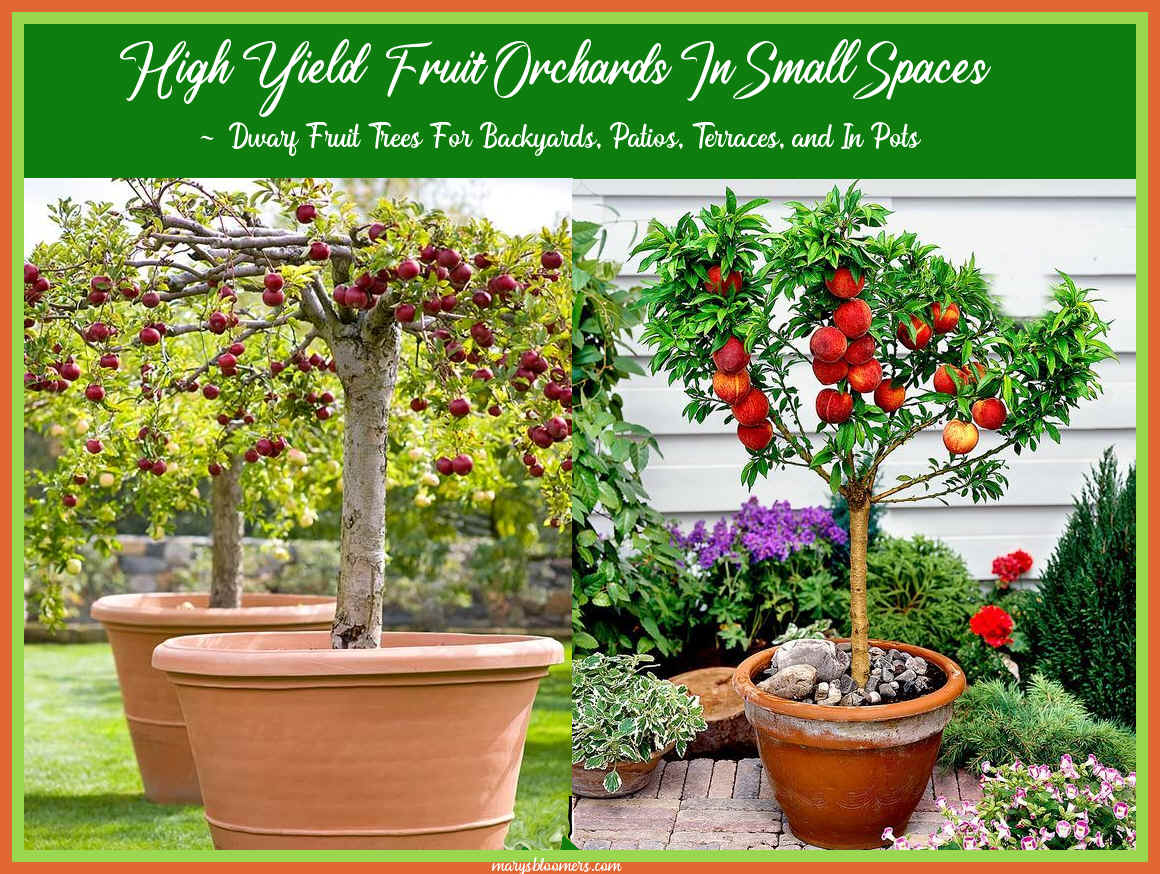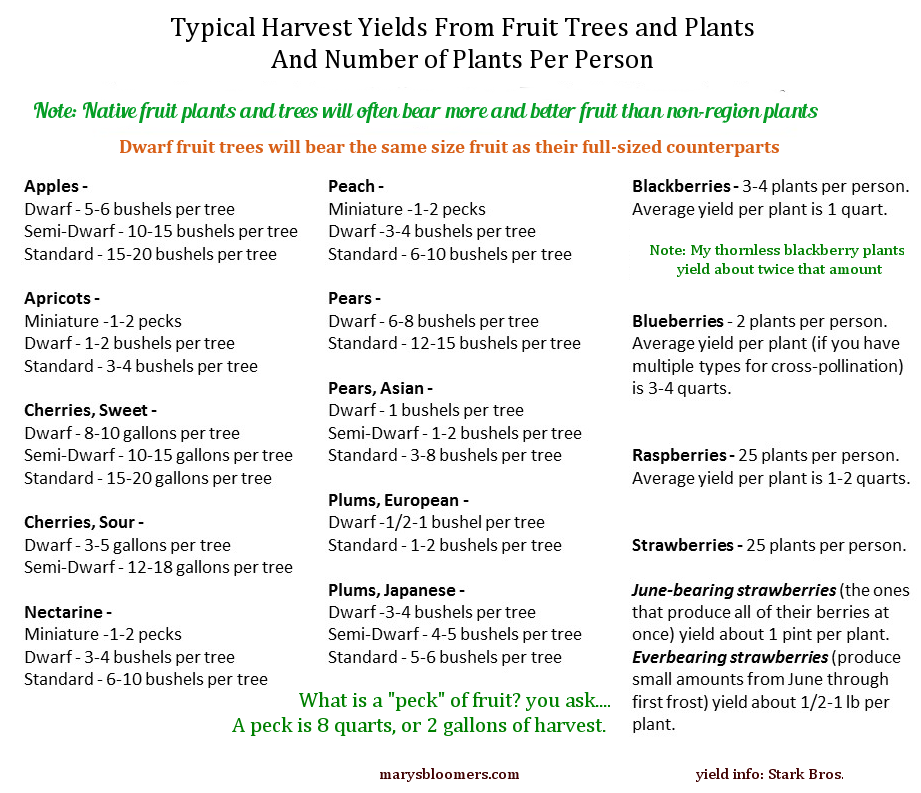 |
|
I love to preserve, gift and store a winter's-worth of fruit jams, butters, "drunken berries" for cocktails, syrups and pie fillings. A small garden footprint with staggered high yields is exactly what i want in a backyard (or front yard) orchard. If i want to get fancy, i can learn to "espalier" (no, it's not a dance) several along my tall backyard fence. The contrast of the fruit trees on that fence would look mahvelous. |
|
|
|
|
|
Fruit Trees That Grow Well in Pots Outdoors Always check your USDA Hardiness Zone map for appropriate varieties of trees that will thrive in your area. Dwarf citrus aren't hardy in my zone, but do very well in containers indoors over the winter. Apple – Pretty white and pink blossoms in the spring are slightly fragrant. Harvest, late summer and autumn. Banana – There is a wide selection of banana varieties available to backyard growers. Choose small banana plants for container growing. Cherry – Frequently planted for their gorgeous blossoms. Harvest, early summer Citrus – Evergreen tree for frost-free climates, citrus trees like orange, tangerine, and lemon are pretty year-round .Harvest, winter. Fig – Many fig varieties offer two harvests per year. Figs are easy to grow in pots Mulberry – Large fruit resembles blackberries. I have 2 dwarfs in large pots. These grow fast and aren't too needy. These can also grow indoors in pots. Nectarine – Dark, slender green leavesy. Harvest, late summer. Olive – An evergreen tree with fine leaves. Olives need to be processed before they are edible. Pear –Delicate spring blossoms, the tree offers beautiful fall color. Harvest, late summer. Persimmon – A beautiful tree with spreading branches, persimmons are most noticeable in the fall when the leaves drop and bright orange fruit remains. Harvest, autumn. Pineapple guava – A small tree or upright shrub, this evergreen produces bluish-green fruit. Harvest, summer. Plum – Flowering plum trees are used frequently the landscape, Beautiful in Asian theme gardens. Harvest, late spring and summer.
By choosing dwarf trees with staggered harvest dates, you can tailor your home orchard for up to half a year of fresh produce. Select varieties from late, mid- and early-seasons within their species, and grow a couple of other species with them.
|
 |
Intense planting, big yields
You can have a large fruit tree, or five dwarfs, and still have sunlight and space for a flower garden. Dwarf berry bushes can be planted in my elevated raised garden beds, about 3 bush-types to a 4 ft long bed. And no bending over to care for and harvest. I like that. It also adds dimension and height in several places in my gardens. Additional fruit and flower plantings can be done at the base of these raised beds. Most dwarfs and semi-dwarfs will begin production and reach mature yield amounts in less time than standards. Their total yields are lower, but you can remedy that by growing multiple dwarf fruit trees. Backyard orchards containing only dwarf trees can be spread out, with some clusters or specimens planted close to your home or play areas, making it easy to care for and harvest. It will also draw more pollinators throughout the garden if some pretty dwarf trees are among the flowers in your perennial beds. They can also be trained on walls or as hedges. Dwarf fruit trees in bloom and fruiting are beautiful wherever you plant them, and are much easier to tend to and spot problems in early stages. |
New: Fruit Tree Chill Hours Requirements Map-->
Quick
Links
Content, graphics and design ©2020 marysbloomers.com/eyecandee.com
All rights reserved
This
site uses Watermarkly Software





